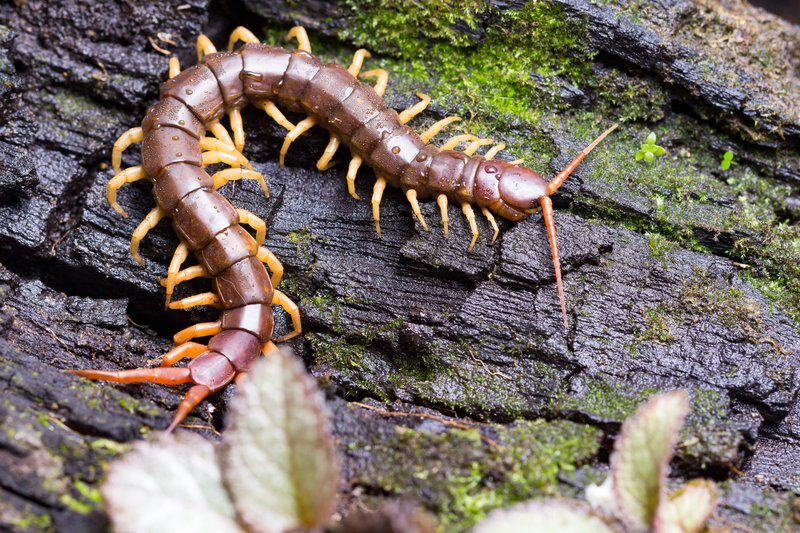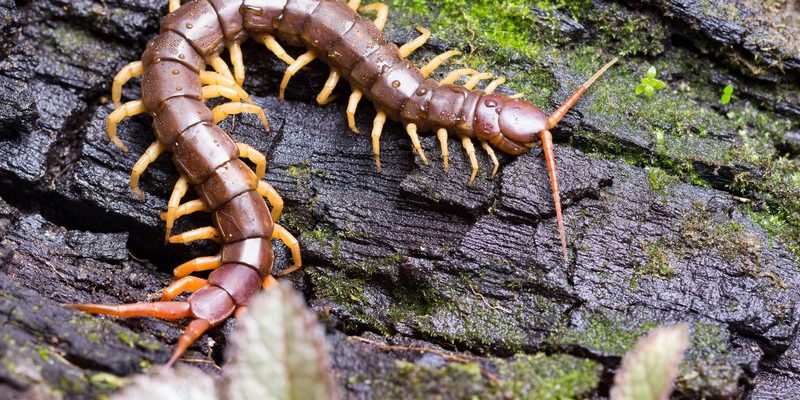
Let’s dive into what sets these remarkable creatures apart and what they have in common. It’s like comparing a cozy, fuzzy blanket to a slick racing car and a sturdy brick wall; all unique, but part of the same functional universe of life. So grab a cup of coffee, and let’s unravel the details of velvet worms, centipedes, and millipedes.
What Are Velvet Worms?
Velvet worms, or *Onychophora*, are strange, ancient creatures often referred to as “living fossils.” Found mostly in warm, humid environments, these little guys seem to crawl straight from a sci-fi movie. They have soft, segmented bodies that look almost fuzzy—hence the name “velvet.”
You might be wondering about their size. Most velvet worms measure between 1 to 10 centimeters long, and they possess a unique set of legs—around 14 to 44 pairs! Instead of hard exoskeletons like insects, their bodies are covered in a soft skin that allows them flexibility, making them quite the agile crawlers, even if they don’t win any speed competitions.
Interestingly, velvet worms have a hidden talent: they can shoot a sticky slime to catch their prey, usually small insects. It’s like using a web, but way cooler! This method is effective and gives them a unique place in the food chain. Plus, they have a fascinating life cycle, with the females giving birth to live young instead of laying eggs, which is quite different from what you might see in many insect species.
Introducing Centipedes
Next up, we have centipedes, and boy, do they create a buzz! These critters belong to the class *Chilopoda* and are often characterized by their long, flattened bodies with one pair of legs per body segment. Depending on the species, centipedes can range in size from a few centimeters to nearly 30 centimeters long.
Centipedes are predatory, which means they’re more about catching their dinner than being dinner. Their bites can be painful to humans—trust me, you don’t want to get too close! They have venomous claws that help them subdue their prey, usually consisting of insects and other small animals. Imagine a tiny ninja sneaking up on its food.
In terms of habitat, centipedes are versatile, found in various environments, from forests to deserts. They often come out at night, making them nocturnal hunters. You might encounter them lurking under rocks or logs if you’re exploring nature in the evening.
The Millipede Experience
Now, let’s move on to millipedes, the gentle giants of the three. Millipedes belong to the class *Diplopoda* and have a few extra legs—two pairs per body segment, which adds up quickly! While they may look similar to centipedes, millipedes are not predatory. Instead, they munch on decaying plant material, making them crucial decomposers in their ecosystems.
Millipedes can also vary significantly in size, often reaching 10 to 30 centimeters in length. However, remember that they have less venom than centipedes and are generally harmless to humans. Most species have a secret weapon: they can release a foul-smelling substance when threatened, which acts as a defense mechanism. Think of it as their version of perfume—only it’s a little less enticing!
You can find millipedes in dark, moist environments—think of damp soil, decaying leaves, or under logs. Their slow movement and diet make them essential for nutrient cycling in the ecosystem.
Comparative Anatomy: Velvet Worms, Centipedes, and Millipedes
When you look closely at these creatures, their anatomy reveals significant differences. Velvet worms are soft-bodied, while centipedes have a tough exoskeleton. Millipedes, on the other hand, have a rigid structure but are generally more flexible than centipedes.
– **Legs**: Velvet worms have many legs, but they typically don’t move as quickly. Centipedes flaunt a more agile form with their long, jaw-like legs aiding in speed. Millipedes take a more leisurely stroll, with their two pairs of legs per segment giving them a unique crawling style.
– **Feeding Habits**: Velvet worms shoot slime to capture prey, centipedes actively hunt using venomous claws, and millipedes are content with a vegetarian diet of decaying material.
– **Defense Mechanisms**: Each creature has evolved unique defenses, from the velvet worm’s slime to the millipede’s stink and the centipede’s venom. It’s like a survival game where each has its winning strategy!
Habitat and Behavior
Let’s take a moment to consider where these creatures call home. Velvet worms thrive in moist, tropical or subtropical areas, often under logs or in leaf litter. They prefer high humidity, which keeps their skin moist. Centipedes, being more versatile, can adapt to various environments, even the dry ones. Millipedes love damp places, usually found in rich, organic matter where they can feast on decomposing vegetation.
In terms of behavior, velvet worms tend to be solitary, while you might spot centipedes hunting independently at night. Millipedes often cluster together for protection and sometimes to mate. Their social behavior adds to the diversity within their environments.
Visiting a rain forest or exploring your garden could give you a glimpse of each of these creatures in action. Spotting them can feel like a mini-adventure!
Why Compare Velvet Worms, Centipedes, and Millipedes?
You might be wondering, why bother comparing these three? Well, they each play a vital role in our ecosystem, showcasing the fascinating diversity of life on our planet. Understanding each creature helps us appreciate the balance of nature.
Here’s the thing: comparing velvet worms, centipedes, and millipedes helps us recognize their unique adaptations. It’s easy to think of them as just creepy crawlies, but they have stories to tell—stories about survival, evolution, and the interconnectedness of life.
By learning about their differences and similarities, we can better understand the environment around us. Plus, appreciating nature’s nuances makes the world a little more enchanting!
Wrapping It Up
So, there you have it! Velvet worms, centipedes, and millipedes might seem wildly different on the surface, but diving into their characteristics reveals a rich tapestry of life. Each creature brings something unique to the table, from the hunting prowess of centipedes to the gentle recycling efforts of millipedes and the quirky adaptations of velvet worms.
Next time you’re out in nature or even reading about these amazing beings, remember that every little critter has a role in the grand scheme of things. There’s so much more to discover, so keep exploring and stay curious!

